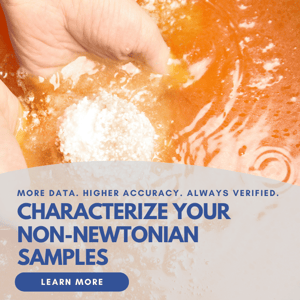
Protein Protein Interaction & Cluster Size - Analysis at Therapeutic Levels
Webinar Download
Protein-Protein Interactions & Cluster Formation
Measuring viscosity at a single and arbitrary shear rate provides limited information which can be difficult to interpret. A much more thorough understanding of a formulation is obtained by measuring the shear rate dependence. In addition to the practical relevance of predicting the behavior during application or processing, the details of a non-Newtonian response reflect the molecular interactions and resulting microstructure at therapeutic levels. Even protein solutions at moderate concentrations can exhibit a Newtonian plateau followed by a shear thinning region illustrating the importance of non-hydrodynamic forces and degree of structure formation.
Download the webinar to hear the full review of the non-Newtonian response of protein solutions under steady shear and discussion of options for interpretation.
.jpeg?width=300&name=Woman%20scientist%2c%20documents%20and%20hands%20writing%20_575258496-min(1).jpeg)


.png?width=200&height=58&name=RheoSense%20Logo%20(REGISTERED).png)



